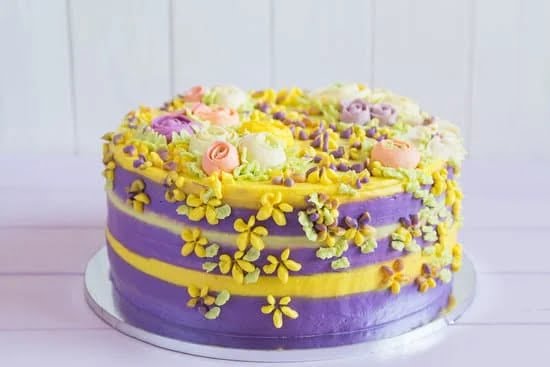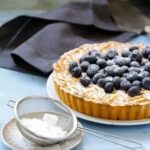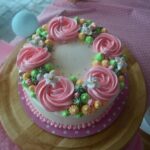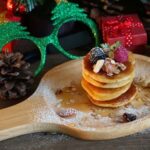Are you looking for ideas on how to decorate a cake? Whether you’re a novice or an experienced baker, creating a beautifully decorated cake can be a fun and rewarding activity. The art of cake decorating allows for endless creativity and personalization, making every cake a unique masterpiece. From choosing the right cake foundation to mastering essential techniques, this article will provide valuable insights and inspiration for your next cake decorating project.
When it comes to cake decorating, the possibilities are truly endless. A beautifully decorated cake can serve as the centerpiece of any celebration, adding a touch of elegance and charm to any occasion.
Whether it’s a birthday, wedding, holiday, or special event, the presentation of a cake is just as important as its taste. With the right techniques and creative ideas, you can transform a simple cake into a work of art that will impress your guests and delight their taste buds.
In this comprehensive guide to cake decorating, we will explore everything you need to know to create stunning cakes that are not only delicious but visually captivating. From choosing the perfect cake foundation and essential ingredients to mastering various decoration techniques and theme-based ideas, this article will serve as your go-to resource for all things related to cake decorating. So get ready to unleash your creativity and take your baking skills to the next level.
Choosing the Right Cake Foundation
When it comes to cake decorating, choosing the right cake foundation is essential for ensuring a successful and visually stunning end result. Selecting the perfect cake base involves considering factors such as flavors, textures, and sizes. Here are some tips to help you choose the right cake foundation for your decorating needs:
- Flavors: When choosing a cake flavor, consider the preferences of the person or people for whom the cake is being made. Popular choices include vanilla, chocolate, red velvet, and lemon. Consider experimenting with unique flavors like coconut or almond for added interest.
- Textures: The texture of the cake can impact how well it holds up to decoration. For intricate designs and fondant work, a denser texture like pound cake or sponge cake may be more suitable. For simpler decorations and lighter textures, a chiffon or genoise may be a better option.
- Sizes: The size of the cake should be chosen based on the number of servings needed and the visual impact desired. For larger gatherings or elaborate designs, consider opting for tiered cakes or larger sheet cakes to accommodate more decoration space.
In addition to these considerations, it’s important to ensure that the chosen foundation suits the theme and purpose of the cake. Whether it’s for a birthday celebration, wedding reception, or holiday gathering, the flavor, texture, and size of the cake should complement the overall design and aesthetic.
By carefully selecting the right cake foundation based on flavors, textures, and sizes, you’ll set yourself up for success when it comes to decorating your masterpiece. With a solid base in place, you can then proceed to explore various techniques and decorative elements to bring your vision to life.
Essential Ingredients for Cake Decorating
Cake decorating is a wonderful way to showcase your creativity and add a personal touch to any baked creation. To create visually stunning and delicious cakes, it’s essential to have the right ingredients for decorating. Whether you’re an experienced baker or just starting out, having a detailed list of must-have ingredients for cake decorating is crucial for success.
One key ingredient for cake decorating is fondant, which is a versatile and pliable icing that can be rolled out and shaped to cover cakes or create intricate designs. Fondant comes in various colors and can be flavored as well, allowing for endless possibilities in terms of design and taste.
Another important ingredient is icing, which serves as the base layer for decorating cakes. Different types of icings can be used, such as buttercream, royal icing, or ganache, each offering its own unique texture and flavor.
In addition to fondant and icing, edible decorations are essential for adding flair to cakes. Sprinkles, edible glitter, sugar flowers, and edible pearls are just a few examples of decorative elements that can take a cake from ordinary to extraordinary. These edible decorations come in various shapes, sizes, and colors, making them perfect for customizing cakes based on different themes or occasions.
Mastering the art of cake decorating begins with having the right ingredients at your disposal. By understanding the essential components of cake decorating – such as fondant, icing, and edible decorations – you can open yourself up to a world of creative possibilities when it comes to designing beautiful and delicious cakes.
| Ingredients | Importance |
|---|---|
| Fondant | Versatile and pliable; comes in various colors |
| Icing | Serves as base layer; different types offer unique textures |
| Edible Decorations | Adds flair to cakes; available in various shapes, sizes, and colors |
Tools of the Trade
When it comes to cake decorating, having the right tools is essential for creating beautiful and professional-looking designs. Whether you’re a beginner or an experienced baker, having the right equipment can make all the difference in your cake decorating success. Here’s a comprehensive guide to some of the essential tools needed for cake decorating.
Piping Bags and Tips
Piping bags are a must-have tool for any cake decorator. These disposable or reusable bags allow you to pipe icing onto your cakes in various designs and patterns. Coupled with different decorating tips, such as round, star, leaf, and petal tips, piping bags can help you create intricate and detailed designs on your cakes.
Spatulas
Spatulas are another essential tool for cake decorating. Offset spatulas are great for smoothly spreading frosting onto the surface of a cake, while straight spatulas are ideal for creating clean edges and smoothing out fondant. Having a variety of spatula sizes can also come in handy when working on cakes of different sizes.
Rolling Pins and Fondant Tools
If you plan on working with fondant, having a rolling pin specifically designed for fondant is crucial. These rolling pins allow you to roll out fondant to consistent thickness, which is essential for smooth and even fondant coverage on your cakes. Additionally, having fondant modeling tools can aid in shaping and detailing fondant decorations for your cakes.
These tools are just the tip of the iceberg when it comes to cake decorating essentials. As you continue to explore the world of cake decorating, consider adding specialty items such as cake turntables, edible paints, stencils, and more to your collection. With the right tools at your disposal, you’ll be well-equipped to bring your ideas on how to decorate a cake to life.
Techniques for Cake Decorating
Cake decorating is an art that requires patience, creativity, and precision. Whether you’re a beginner or a seasoned baker, knowing the essential techniques for cake decorating can take your creations to the next level. Here are step-by-step instructions on various cake decorating techniques to help you bring your cake vision to life:
1. Piping: Piping is a classic and versatile technique for decorating cakes. With the right piping tips and bags, you can create intricate designs, borders, and even three-dimensional figures on your cakes. To get started with piping, here’s what you’ll need:
To practice piping, start by holding the piping bag at a 45-degree angle and applying even pressure to create smooth lines or rosettes on the cake.
2. Fondant Shaping: Fondant is a popular choice for creating smooth, professional-looking finishes on cakes. To shape fondant for cake decorating, gather these materials:
Start by rolling out the fondant into a thin sheet and carefully drape it over the cake. Smooth out any wrinkles or air bubbles with a fondant smoother or your hands, then use shaping tools to cut out shapes or create intricate details.
3. Edible Painting: Edible painting adds flair and customization to your cake designs. With edible food coloring and paintbrushes, you can create beautiful hand-painted designs directly onto your cakes. For edible painting, make sure to have:
Be sure to practice on a separate surface first before painting directly onto your cake to refine your technique and design.
By mastering these essential cake decorating techniques-piping, fondant shaping, and edible painting-you can elevate your creations from simple desserts to stunning works of art that will leave everyone impressed with your skills.
Theme-Based Decorating Ideas
When it comes to decorating a cake, choosing a theme can add an extra layer of creativity and excitement. Whether it’s a birthday, wedding, holiday, or any other special occasion, the theme sets the tone for the cake design and allows for endless possibilities. For a birthday celebration, consider incorporating the recipient’s favorite colors, hobbies, or interests into the cake decorations.
Weddings often call for elegant and romantic designs, such as floral patterns or intricate lace details. Holidays provide the perfect opportunity to showcase festive themes like Christmas trees, Halloween pumpkins, or Easter bunnies.
One fun idea for decorating cakes based on different themes is to use edible images or printed wafer paper to create stunning visuals directly on the cake’s surface. This technique allows for intricate designs and detailed illustrations that can bring any theme to life.
Another creative approach is to incorporate 3D elements into the cake decorations, such as fondant figurines, sugar flowers, or sculpted edible sculptures. These additions can truly elevate the overall look of the cake and make it a memorable centerpiece for any special event.
For those looking to take their theme-based cake decorating ideas to the next level, experimenting with mixed media techniques can yield impressive results. Combining traditional icing pipework with non-edible embellishments like ribbons, beads, or fabric accents can create unique and visually stunning cakes that stand out from the crowd. Whatever theme you choose for your cake decorating project, remember that personalization and attention to detail are key in bringing your creative vision to life.
| Theme | Ideas |
|---|---|
| Birthday | Incorporate favorite colors, hobbies or interests into decorations; consider using edible images. |
| Wedding | Create elegant and romantic designs like floral patterns; consider using 3D elements like sugar flowers. |
| Holidays | Showcase festive themes such as Christmas trees or Halloween pumpkins; experiment with mixed media techniques. |
Tips and Tricks for Beginners
As you embark on your cake decorating journey, it’s important to remember that every masterful baker was once a beginner. Learning the basics of cake decorating can be both challenging and rewarding, and with the right guidance, even novice decorators can create stunning confections. This section will provide invaluable tips and tricks for beginners, including troubleshooting common decorating issues and perfecting basic techniques.
Understanding Basic Techniques
Before diving into complex cake decorating projects, it’s crucial to master the fundamental techniques. Start by practicing icing a smooth layer on a cake or piping simple borders and designs. Understanding how to work with different consistencies of icing and fondant is also essential for achieving professional-looking results. Taking the time to perfect these basic skills will set a strong foundation for more advanced decorating projects.
Troubleshooting Common Decorating Issues
It’s common for beginners to encounter challenges when first experimenting with cake decorating. From air bubbles in fondant to uneven icing layers, there are several obstacles that may arise. One key piece of advice is not to get discouraged but rather to view these challenges as learning opportunities. This section will offer practical solutions for troubleshooting common issues, empowering novice decorators to overcome potential setbacks with ease.
Seeking Inspiration and Guidance
Whether you’re new to cake decorating or looking to refine your skills, seeking inspiration from experienced decorators can be incredibly valuable. Online tutorials, books, and classes offer a wealth of knowledge that can help expand your repertoire of techniques and designs. Additionally, joining a community of fellow bakers provides an opportunity for sharing tips, asking questions, and receiving feedback on your creations.
By incorporating these tips and tricks into your cake decorating practice, you’ll be well-equipped to navigate the challenges that come with starting out in this creative craft. Remember that patience and perseverance are key ingredients in mastering the art of cake decoration. With practice and dedication, you’ll soon be bringing your unique ideas on how to decorate a cake to life with confidence and skill.
Showcasing Your Creativity
The art of cake decorating is not only about creating a delicious confection but also about expressing creativity and showcasing talent. To inspire aspiring cake decorators and provide visual reference for readers, here are some stunning examples of beautifully decorated cakes. Whether you’re a beginner looking for ideas or an experienced decorator seeking inspiration, these creations are sure to ignite your imagination and help you develop new ideas on how to decorate a cake.
One popular theme for beautifully decorated cakes is floral designs. Delicate sugar flowers, meticulously piped buttercream blooms, or even fresh edible flowers can add an elegant and romantic touch to any cake. From simple single blooms to elaborate cascading arrangements, floral designs offer a wide range of possibilities for decorators to explore.
Another trend in cake decorating is the use of minimalistic designs. Clean lines, geometric shapes, and subtle accents can make a powerful statement when executed with precision. Simple doesn’t have to mean boring – minimalistic cakes can be both sophisticated and impactful, making them perfect for modern weddings or upscale events.
For those looking for more whimsical ideas on how to decorate a cake, novelty cakes are always a hit. From sculpted characters and playful motifs to gravity-defying structures and interactive elements, novelty cakes allow decorators to unleash their imagination and create show-stopping centerpieces that are as delightful as they are impressive.
Incorporating these examples into your own cake decorating projects can serve as a valuable source of inspiration. By observing the techniques used in these beautifully decorated cakes, aspiring decorators can gain insight into the skills needed to bring their own creative visions to life. Whether it’s through mastering intricate piping techniques, perfecting fondant sculpting, or experimenting with new flavor combinations, there are endless possibilities for turning ideas into stunning reality.
Conclusion
In conclusion, the art of cake decorating is not only important for visually stunning desserts but also for expressing creativity and adding a personal touch to any celebration. By carefully choosing the right cake foundation, essential ingredients, tools of the trade, and mastering various techniques, individuals can create beautifully decorated cakes that are as delicious as they are visually appealing.
From theme-based decorating ideas for specific occasions to showcasing creativity through unique designs, there are countless opportunities to experiment and improve cake decorating skills.
With the knowledge gained from this article, readers have a solid understanding of what it takes to decorate a cake and can feel confident in their abilities to create stunning desserts. Furthermore, the tips and tricks provided for beginners offer valuable insight into common issues and how to overcome them. Aspiring bakers and seasoned professionals alike can draw inspiration from the showcased examples of beautifully decorated cakes, empowering them to unleash their creativity and try out new decorating ideas.
Ultimately, cake decorating is an art form that allows individuals to showcase their skills while delighting others with delectable treats. With practice and dedication, anyone can become proficient in the craft of cake decorating.
Whether it’s for a special occasion or simply for personal enjoyment, there are endless opportunities to create beautiful masterpieces that will undoubtedly leave a lasting impression on those who indulge in them. So go ahead, gather your essential ingredients and tools, choose your perfect cake foundation, experiment with different techniques and themes, let your imagination run wild and see where your next creation takes you.
Frequently Asked Questions
How to Easily Decorate a Cake?
Decorating a cake can be easy and fun with the right tools and techniques. Start by choosing a color scheme or theme for your cake, then use piping bags with different tips to create borders, flowers, and other designs. You can also use fondant to create shapes or cover the entire cake for a smooth finish.
How Do You Make a Plain Cake Look Fancy?
To make a plain cake look fancy, consider using fresh fruit or edible flowers as a garnish. You can also sprinkle powdered sugar or cocoa powder through a stencil to create a decorative pattern on top of the cake. Another option is to use chocolate ganache or glaze to create a shiny, professional-looking finish.
What Are the 7 Different Cake Decorating Techniques?
The 7 different cake decorating techniques include piping, which involves using a pastry bag and different tips to create designs with frosting; fondant work, which involves rolling out fondant and using it to cover the cake or create 3D decorations; gum paste flowers, where you use gum paste to create intricate floral designs; royal icing, which is a hard white icing used for delicate decorations; buttercream transfers, where you pipe a design onto parchment paper and then freeze it before transferring it onto the cake; stenciling, which involves placing a stencil on the cake and then dusting it with powdered sugar or cocoa powder; and finally, hand-painted designs using food coloring or edible paint for detailed and personalized decorations.

Welcome to our cake decorating blog! My name is Destiny Flores, and I am the proud owner of a cake decorating business named Cake Karma. Our mission is to provide delicious, beautiful cakes for all occasions. We specialize in creating custom cakes that are tailored specifically to each customer’s individual needs and tastes.





